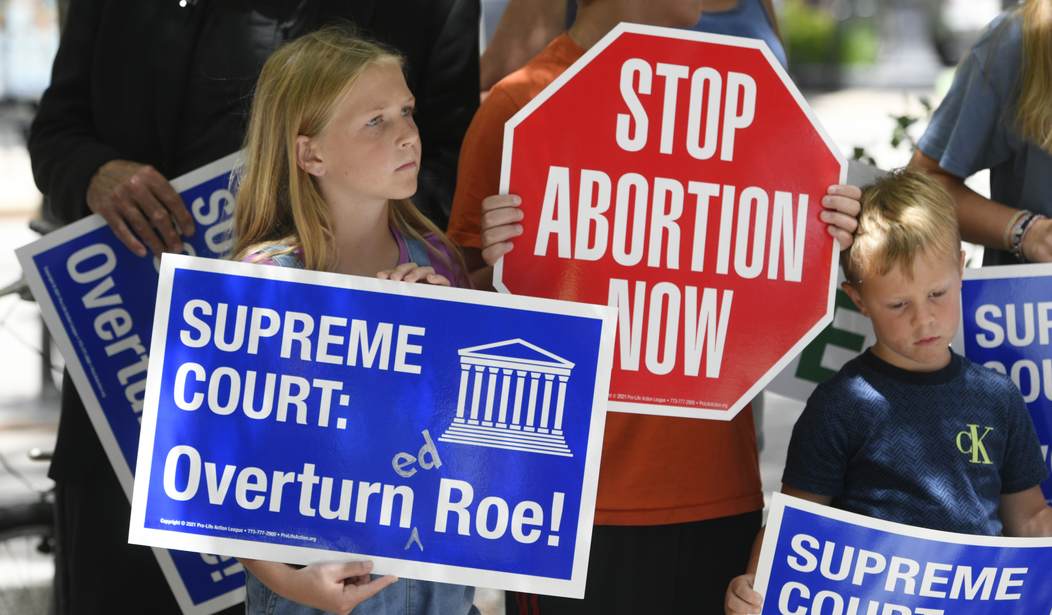Pro-lifers waited 49 grueling years to see the judicial barbarism of Roe v. Wade finally overturned in last year's blockbuster Dobbs v. Jackson Women's Health Organization. That ruling, delivered by Justice Samuel Alito, merely re-politicized a hotly contested issue that had been erroneously accorded the status of "constitutional right" in Roe. Unfortunately, it seems perhaps likely, based on rapidly accumulating data points, that pro-lifers' patience could be similarly tested as we push onward toward the only logical endpoint in this defining struggle for substantive justice and human dignity: abortion abolition in America.
This week's resounding defeat of Issue 1 in increasingly bright-red Ohio is another tough pill to swallow for pro-lifers, who have now endured a number of painful ballot box defeats in the year-plus since Dobbs. True, that ballot measure, which would have (soundly) raised the threshold for amending the Ohio state constitution to 60% of voters from the bare-majority status quo, said nothing explicitly about abortion. But in advance of this November's separate ballot box referendum on codifying an abortion "right" in Ohio's state constitution, Issue 1 was treated as an abortion proxy by Buckeye State activists on both sides — not to mention those across the country who flooded the state with money to help mobilize voters on both sides. Issue 1 was rejected 57%-43%.
If that were the end of the story, it wouldn't be all that terrible. But the defeat of Issue 1 must be interpreted in a broader context. Since Dobbs, the following has all transpired: Michigan's abortion "right" constitutional amendment passed 57%-43%; Kansans retained an abortion "right" in their state constitution — via an unusually poorly worded referendum, albeit — by a 59%-41% margin; Kentuckians voted to reject a declaration that their state constitution not be construed to contain an abortion "right," by a 52%-48% margin; and a crucial state supreme court election in Wisconsin was decidedly won by a pro-abortion jurist, flipping that court from a conservative to a progressive majority in what has become one of the nation's closest swing states.
Recommended
It is certainly true that numerous pro-life governors won handily in last November's midterm elections despite having passed pro-life legislation: Ron DeSantis and Kim Reynolds demolished their opponents in Florida and Iowa, respectively, and Texas' Greg Abbott and Georgia's Brian Kemp also secured their own reelections by very comfortable margins. At the same time, available exit polling from last November tended to show that most single-issue abortion voters — those whose votes were mostly animated by, or even cast exclusively due to, their stances on abortion — pulled the lever for Democrats, not Republicans. That is a stark reversal from the pre-Dobbs era, when most single-issue voters on this issue were animated by their pro-life convictions and determination to see Roe discarded into the dustbin of history.
The question, then, becomes one of the very oldest in all of politics: What to do when the advancement of one's cause, though that cause is plainly just and righteous, is tempered by both whim and entrenched public sentiment? The answer lies in drawing yet another parallel between abortion and chattel slavery, which like abortion before it both involved the wicked treatment of human life as disposable property and was falsely codified as a "right" under the U.S. Constitution due to the oxymoronic constitutional law doctrine known as "substantive due process" (Roe in the case of abortion, and the infamous 1857 case Dred Scott v. Sandford in the case of slavery).
In 1858, during his first debate with Sen. Stephen Douglas (D-Ill.) in Ottawa, Illinois, Abraham Lincoln said: "With public sentiment, nothing can fail; without it, nothing can succeed. Consequently, he who molds public sentiment goes deeper than he who enacts statutes or pronounces decisions. He makes statutes and decisions possible or impossible to be executed." Lincoln's point must not be misinterpreted: Law and culture do affect each other, and a skilled ruler can utilize the law as a means of inculcating virtue or instilling sound republican habits of mind. But some underlying reserve of public sentiment is still necessary to effect transformative change. In order for voters to trust a ruler such that they might ultimately be guided by him, they must first sufficiently trust that the ruler adequately speaks for them and has their best interests in mind.
The unfortunate reality for abortion abolitionists is that American public sentiment does not yet match the orthodox pro-life claim: That human life as early as a fertilized egg or embryo, which possesses a unique genetic code, is dignified and inherently worthy of legal protection as "person(s)" under the meaning of the U.S. Constitution's 14th Amendment. It is true that courts and legislatures have acted ahead of trailing public opinion in many other instances, including the same-sex marriage fights of last decade. But while Americans strongly oppose late-term abortion and — depending on the wording of a given poll — will often support abortion bans in the 12-15 weeks' gestational range, the moral intuition of the median American regarding the inherent dignity of the human embryo simply does not yet accord with the orthodox pro-life stance. Again, that is the simple reality.
More education on this issue, encompassing everything from embryology to the philosophy of law, is thus very much needed. Fortunately, there are some wonderful pro-life organizations, such as Live Action and Americans United for Life, that are doing precisely that. Also crucial for the contemporary pro-life movement's political viability is full-scale backing of various family policy measures that provide direct monetary support to families raising children, such as those policies implemented in Poland and Hungary, and some of which are increasingly popular in American conservative circles.
Pro-life lawmakers, for their part, must act in accordance with the path described above: Adequately speak for their voters, earn their trust, and sufficiently assuage their concerns before then trying to lead public opinion that might be trailing behind what substantive justice requires. Complete abortion abolition ballot box referenda should thus be avoided, for the time being, for all but the very deepest of deep-red states. State legislatures and, ideally, the U.S. Congress should focus for the time being on legislating in this arena not terribly far removed from their voters' desires. The precise contours of a piece of legislation will depend on each specific state and each specific polity, not to mention the political and rhetorical skill of a given state's legislators and governors. Some level of federal congressional backstop is also wholly appropriate, even at this time: something roughly around 15 weeks' gestational period is about right, given current opinion.
Pro-lifers must remember that even though Lincoln abhorred slavery and lived just long enough to see the 13th Amendment pass through Congress (though not long enough to see its ratification), he was a "moderate" anti-slavery Republican in the truest sense of the term. Lincoln's scruples were unshakeable, but he appreciated the practical need for incrementalism and above all prudence, which Aristotle considered to be the queen of the virtues and the stateman's defining trait. Lincoln's prudence ultimately helped lead to substantive justice: the abolition of slavery.
That same prudence is only more important at a time when the leading presidential nominee of the only major pro-life political party, Donald Trump, unfortunately blamed pro-lifers for the GOP's milquetoast November 2022 midterm election results and continues to have a tense relationship with America's pro-life leadership. Many ardent pro-lifers — this columnist included — would certainly prefer a different Republican presidential nominee, this time around. But if the pro-life movement is to remain politically viable as a close ally of the Republican Party in the aftermath of Roe's demise and in the era of Trump, prudence would now suggest seeking to minimize, rather than underscore, differences with the volatile 45th president. After all, one must first attain power, or at least find oneself close to power, in order to use it.
As Lincoln concluded his stirring second inaugural address: "With malice toward none, with charity for all, with firmness in the right as God gives us to see the right, let us strive on to finish the work we are in (and) to bind up the nation's wounds ..." And so pro-lifers now "strive on" to "bind up" the festering "wounds" of the now-defunct Roe regime. Godspeed.























Join the conversation as a VIP Member